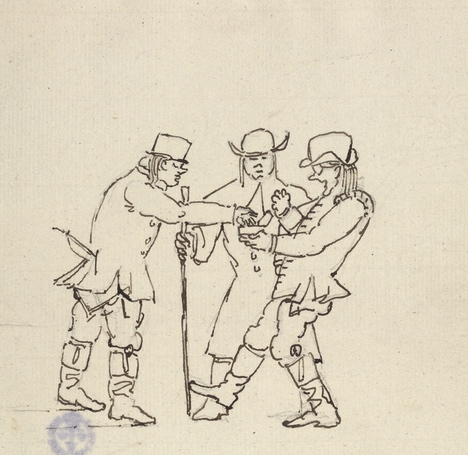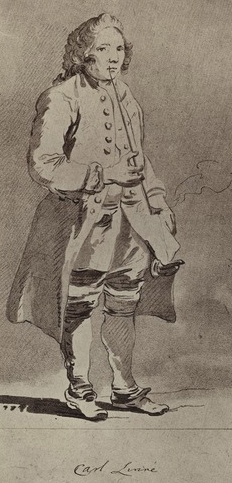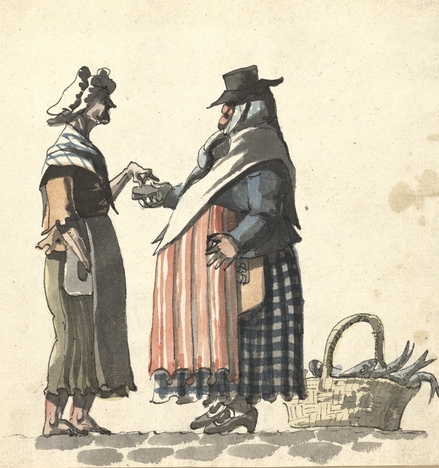One might hear: ”It’s brilliant that there are so few people who smoke in Sweden”. Poppycock! Well, they don’t smoke cigarettes that much is true. But what about this small, humid and repellent bag they hide in their mouth? Very discreet indeed. Swedes are quite good at placing it under their upper lip in half a microsecond. At every bend in the road, you cross charming blond Scandinavian men, sporty, smiley but what is wrong with them and their brown snus? Cleft lips and rotten teeth soon.
And so I started to wonder when this curious habit, this one that still occasionally plunges the European Union into turmoil since snus is only allowed in Sweden and prohibited everywhere else in the Union. In 1995, Sweden joined the Union on condition that the country will be allowed to keep it’s powder tobacco. Snus is no joking matter.
Needless to say that I won’t be praising tobacco here. Let’s just see what the past can tell us. The pioneer explorers in the New World, the first of them being Colombus, discovered the Natives smoking and snuffing tobacco. But it was several decades before the success of tobacco was realised in the Old Continent.
In the 1560’s, the French Royal Family started to snuff: a powdered tobacco is inhaled through the nose. It was first a remedy against migraines prescribed by the then French Ambassador in Portugal, the so called Jean Nicot (1530 around-1600). Thus, Catherine de Medicis (1519-1589) became the first royal snuffer. The fashion was ready to spread all around Europe. In 1753, the Swedish botanist Carl Linnaeus, who lived in Uppsala, named two species of tobacco after the French man. The word “nicotine” was born.
Snuffing quickly became an aristocratic habit. Some of them loved it madly such as Queen Charlotte of England (1738-1820), wife of George III, who was nicknamed “Snuffy Charlotte”. A whole room of Windsor castle was dedicated to store her snuff stock. All the fancy and wealthy men and women of Europe were also carrying their own little box filled with tobacco. The favorite pastime of Adolf Frederick (1710-1771), king of Sweden, was to make snuffboxes. In the 18th century, it became the trendy accessory that you needed to possess to be in vogue. Snuffboxes were made of precious materials, such as enamel and gold. The count of Tessin, French Ambassador in Paris, who is already known to the regular readership of this blog, was quite often mentioning snuffboxes among his countless Parisian purchases. The man was a passionate art collector. In 1740, he wrote to a friend: « To tell you my extravagance would be endless : a snuffbox painted by Massé with the portait of the little Charlotte (his niece), another portrait by Oudry of the big Pärh (his dog), a painting by Boucher, another by Chardin… ».
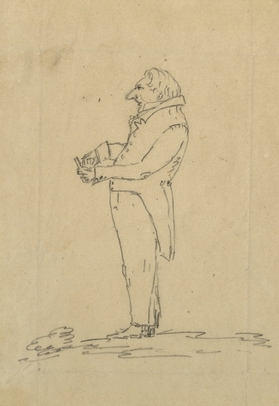 Some artists were renowned for their refined snuffboxes. The Swedish artist Carl Gustav Klingstedt (1657-1734), who was working in Paris, was one of them. He was known by his contemporaries as the « Raphael of the snuffboxes». Which is something ! Here is another charming story from 1741 recalled by Tessin in a letter to his wife who was then residing in Sweden. His words illustrate perfectly that snuffboxes, sometimes more numerous to people than outfits, were proudly shown during receptions :
Some artists were renowned for their refined snuffboxes. The Swedish artist Carl Gustav Klingstedt (1657-1734), who was working in Paris, was one of them. He was known by his contemporaries as the « Raphael of the snuffboxes». Which is something ! Here is another charming story from 1741 recalled by Tessin in a letter to his wife who was then residing in Sweden. His words illustrate perfectly that snuffboxes, sometimes more numerous to people than outfits, were proudly shown during receptions :
« Ah! my Dear Ulla! I must tell you about my adventure with Fru Blomfeldt. I was dining at her place the other day, and clever as a crook, I had a beautiful empty snuffbox with a miniature by Klingstedt. I presented it to Madame, and said to her that when we arrived at her place, there was no need to take tobacco, since we come to the source. Or deaf, or crazy, she took my words wrong (…). I was petrified when she pocketed my box with a string of never ending compliments; fortunately the Nuncio asked to see it and after he had examined the box, I took it and pocketed it myself in turn this time leaving her petrified at her loss. All this happened without elucidations, and the best part is that I have my snuffbox which was not intended for the use by her cute little nose”.
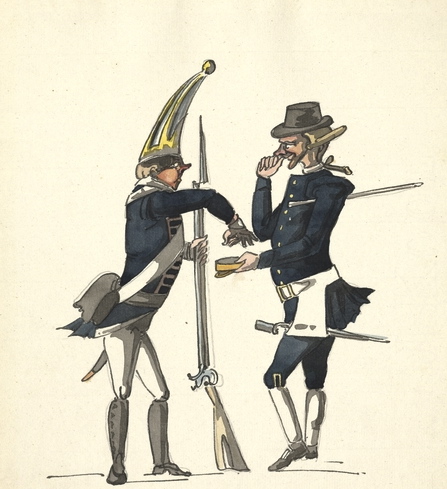 After his return to Sweden, Tessin and the Swedish Royal Family could count on the devotion of the new official representative of Sweden in France: Carl Fredrik Scheffer. Apart from his diplomatic mission, the envoy was made responsible for sending to Stockholm every single novelty, Paris being at that time considered as the world capital for fashion and taste. Scheffer was searching punctiliously, like a real investigator, accessories of all kinds. In 1748, he wrote from Paris to Tessin: “If I do say so myself we will not have seen in Sweden such a pleasant piece and so perfectly crafted as the snuffox that Your Excellence will receive by today’s post. There have only been a few like them produced so far but it so much win the vote of the court and the town… ».
After his return to Sweden, Tessin and the Swedish Royal Family could count on the devotion of the new official representative of Sweden in France: Carl Fredrik Scheffer. Apart from his diplomatic mission, the envoy was made responsible for sending to Stockholm every single novelty, Paris being at that time considered as the world capital for fashion and taste. Scheffer was searching punctiliously, like a real investigator, accessories of all kinds. In 1748, he wrote from Paris to Tessin: “If I do say so myself we will not have seen in Sweden such a pleasant piece and so perfectly crafted as the snuffox that Your Excellence will receive by today’s post. There have only been a few like them produced so far but it so much win the vote of the court and the town… ».
The French Revolution almost put an end to this trend, snuffing being too much associated with aristocratic customs. Europeans began to smoke the cigar. But in Sweden, another way of snuffing was on is way to conquer the kingdom where the culture of tobacco was an important industry. The dry snuff was ousted by a humid snus no longer intended for the nose but for the mouth. This new style spread promptly and, in the 1820’s, was already well established in the country.
Around 200 hundred years later, the snus is still the best or more likely worst friend of many a swede’s gum.
Charlotte
All the pictures used in this article are to be found on the database. You can find a great amount of letters written by Tessin and Scheffer at the Manuscript Department.

